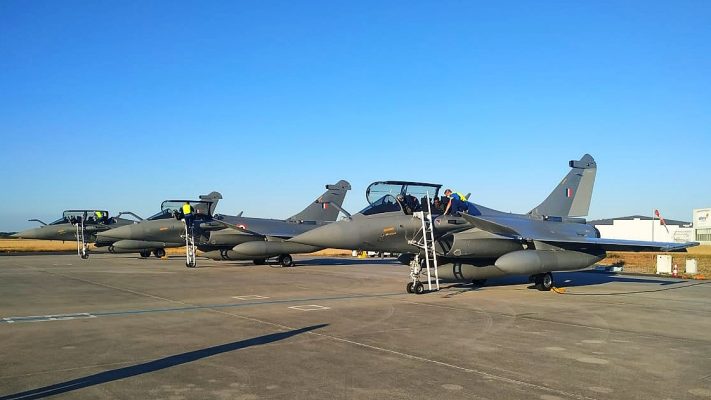
T he first five Rafale fighter jets from France landed at the frontline Ambala airbase on July 29 after flying a circuitous 7,000 km journey from Paris, with a brief stopover in Dubai. By 2022, when all 36 Rafales comprising two squadrons are operational, the Indian Air Force will have four lethal warplane models in its fleet, including the Sukhoi Su-30MKI Flanker, Mirage-2000 Vajra and MiG-29 Fulcrum. Plus, with the indigenous Tejas being inducted at the rate of 8-12 aircraft per year, the IAF is on course to becoming a well-balanced fighting force.
Since the IAF has around 260 Su-30s (for an eventual Flanker fleet of well over 300 Flankers), 90 Fulcrums and around 45 Mirages, the 36 Rafales will not be dominant in numbers (although that could change with possible follow-on orders). However, where it lacks in quantity, the French fighter will compensate by bringing a whole suite of advanced 4.5 generation technologies that have never before been seen in the region. The brand new Rafale will take India’s air combat capability to an entirely different level.
It needs to be emphasised at the outset that no single weapons platform can be a ‘game changer’. Countries that integrate weapons and systems and operate them in sync with each other are usually the countries that win wars. The Rafale by itself won’t be a war winner but it will become a force multiplier – that is, when deployed with the workhorse Sukhois, MiGs, Mirages and Tejas, all five aircraft become more lethal by feeding off of each other’s synergies.
God’s eye view of the battlespace
Rafale is a French word which means “gust of wind”, but in a more military sense it means “burst of fire”. It is designed to blow away enemy aircraft and ensure air dominance. The aircraft’s greatest strength is that it introduces network-centric warfare capabilities and data-logistics similar to those on fifth generation stealth jets such as the American F-35, enabling the French jet on patrol to build a more accurate picture of the battlespace by pooling sensors over a secure network, and even exchange data using new satellite communications antenna.
As Dassault claims, the Rafale’s “multi-sensor data fusion” provides a link between the battlespace surrounding the aircraft and the pilot with its unique ability to grasp the outcome of tactical situations and make sensible decisions.
Each Rafale will therefore act like a mini AWACS aircraft, passing on to other pilots data about the location of enemy aircraft, air defences and radar coverage, thereby greatly enhancing IAF pilots’ situational awareness.
Cutting off the enemy’s jugular
As the IAF’s air dominance fighter, it is the Sukhois that currently have the role of establishing air dominance over the subcontinent. This involves intercepting and shooting down waves of attacking enemy fighters so that other attacking aircraft such as the Rafales, Mirages and perhaps the indigenous Tejas light combat aircraft can pour in through the breach.
However, the Sukhoi has a drawback – it is an extremely large and heavy aircraft that will light up like a Christmas tree on enemy radars. The Su-30 was not built to be stealthy and that is the reason why India sent in the smaller Mirages to hit Balakot on February 26, 2019.
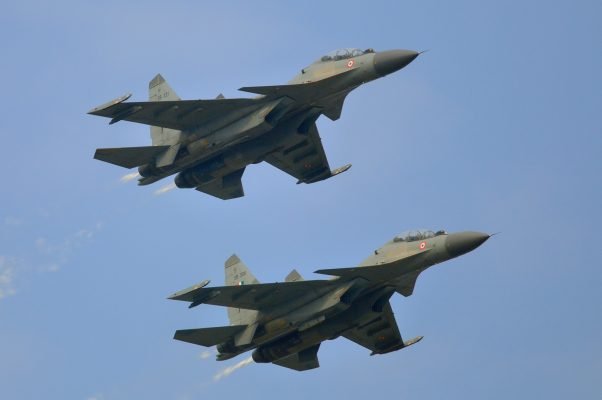
Since the French will not have a fifth generation fighter for the next two decades, they have packed the Rafale with technologies that are capable of going head to head with the latest stealth jets. The Rafale, with its low radar profile and firepower (14 hardpoints versus 12 on the Sukhoi) can now perform that role.
According to military aviation writers such as Sebastien Roblin, the Rafale is much more agile than the F-35 stealth fighter, with superior climb rate, sustained turn performance and the ability to super-cruise (maintain supersonic flight without using fuel-guzzling afterburners) at Mach 1.4 while carrying weapons.
Anti-aircraft defences consist of several links – command, control, communication, ground radar, missiles and airborne radar – in a long kill chain. Using its semi-stealthy profile, wide range of weapons, powerful jammers and 360-degree early-warning capability, the Rafale can snap one or more of these links, and thereby disrupt the enemy’s detection ability.
See first, shoot first
Once all 36 Rafales are inducted, they could well be the IAF’s interceptor of choice. This is mainly due to its extreme quick readiness. The aircraft can take off in less than 500 metres (using afterburners) and even while the plane is taxiing on the runway, the electronic data link can provide the pilot with all the information needed to intercept the target: the enemy’s aircraft’s position, course and speed. Once airborne, its active electronically scanned array (AESA) radar’s sensitivity makes it possible to detect smaller targets and detects them earlier.
AESA radars bring an entirely new detection capability to the IAF whose aircraft are currently equipped with older passive electronically scanned array (PESA) sensors.
Former IAF chief Air Chief Marshal A. Y. Tipnis pointed out that the Rafale’s SPECTRA radar provides a terrific enhancement to the IAF’s ability to operate in highly “dense” hostile environments where there is a heavy presence of anti-aircraft radars and weapons. SPECTRA not only allows the Rafale to detect and localise a threat against the aircraft, but also selects the most effective countermeasures against it.
The Rafale would thus also be the ideal aircraft to use against enemy radar networks, anti-aircraft missiles and gun batteries (which Wing Commander Abhinandan Varthaman’s MiG-21 was simply unable to detect with its rudimentary sensor).
The Rafale’s arrival could finally see the beginning of the end for the outdated and trouble-prone MiG-21 interceptor. The MiG-21s may eventually be moved out of Jammu and Kashmir and supplanted with the Rafales, thus squeezing Pakistan further. The replacement of the short-range and limited endurance MiG-21 with the Rafale will force the PAF to operate further from the Indian border. Henceforth, instead of merely intercepting, Indian pilots will have the capbility to chase, kill and safely make it back home.
Massive firepower
The Rafale will be equipped with the latest SCALP and Meteor missiles, which will outrange all known weapon systems in the region and will give India a definitive combat edge. The SCALP standoff missile has a range of over 300 km and is designed to hit high value, strongly protected targets deep inside enemy territory. The Rafale jets can carry two such missiles that will enable them to hit virtually any target within Pakistan.
Another system that will add to this capability will be the Meteor air to air missile. With a range of over 150 km, the Meteor will outclass all other systems in the region, including the AMRAAM missiles in service with Pakistani F 16 fighter jets.
The French fighter’s Mica air-to-air missile, which has a range of 79 km, can be launched without initially being locked and guided remotely by a data link on the fighter before engaging either an infrared or AESA radar seeker to close in for the kill, using a vector-thrust motor to pull off tight manoeuvres. Because both the Rafale and the Mica missile can employ passive infrared targeting without using an indiscrete active-radar for guidance, the Mica can be launched with little warning for the target.
Both the Rafale and Sukhoi are capable of performing four-hour combat missions with a range of 3,000 km. In the Sukhoi, an aerial refuelling system increases the range to 5,200 km or flight duration up to 10 hours at cruise altitudes. (In comparison, a MiG-21 has an endurance of less than 30 minutes.) The aircraft’s super-manoeuvrability gives it a huge advantage against its opponents. In multiple wargames the Flanker family of aircraft has beaten Western aircraft such as the F-15, F-35 and Eurofighter – like clubbing baby seals, to use the unfortunate comparison made by a Western military officer who observed the simulation.
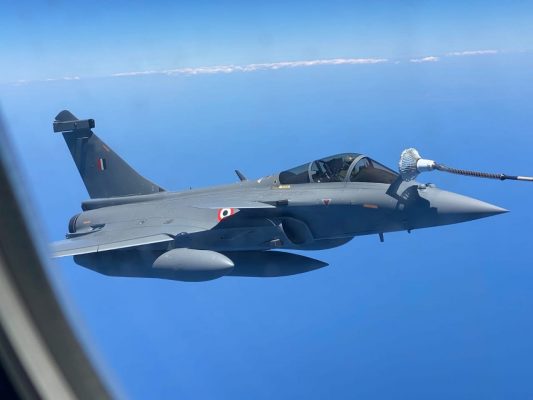
The Sukhoi’s deadliest weapon is the BrahMos-A, the fastest air to ground missile in the world. The BrahMos’ 3,000 km per hour speed – literally faster than a bullet – means it hits the target with a huge amount of kinetic energy. In tests, the BrahMos has often cut warships in half and reduced ground targets to smithereens. The Sukhoi’s blistering speed will add extra launch momentum to the missile, plus the aircraft’s ability to penetrate hardened air defences means there is a greater chance for the pilot to deliver the missile on to its designated targets.
It’s difficult to visualise how the Pakistan Air Force would withstand the Rafale-Sukhoi one-two punch. It’s lose-lose for Pakistan, which will be forced to defend its airspace by sending up F-16s and the Chinese-Pakistani JF-17s. Most of them won’t survive the initial Indian barrage. Pakistan’s fleet of around eight AEW&C aircraft will most likely to decapitated by the Rafale’s Meteors. Without these airborne radars and with its radars knocked out, the PAF will be flying virtually blind, which is what happened to the Iraqi Air Force in the Gulf War when individual Iraqi pilots had to operate their fighter jets with little to no support from command and control centres.
In the 1971 War, the last major conflict in which the two air forces clashed, the PAF was blown out of the subcontinent’s skies within a week. Most PAF aircraft stayed well within Pakistani airspace for the latter half of the war and simply refused to engage IAF fighters.
Back then, IAF aircraft lacked the range to pursue Pakistani fighter aircraft that sought safe sanctuary close to the Iranian border. However, the long legs of the Rafales and Sukhois will allow Indian pilots to perform sustained dogfights and chase the Pakistanis till they are shot down.
Once the frontline PAF aircraft are neutralised, waves of Sukhois can be launched against Pakistani military and nuclear installations. Su-30s armed with the BrahMos can knock out Pakistani troop and armour concentrations, air bases and naval targets. In the last war, it was the IAF that set first fire to Karachi harbour before the Indian Navy’s missile boats pulverised the remaining fuel storage tanks.
Likely targets
Considering that India’s primary enemy is Pakistan and that country’s chief backer is China, these two countries are the obvious targets.
Against Pakistan, the targets are obvious. After the Rafales perform the role of suppression of enemy air defences, the adversary will be effectively defanged. Following the sanitisation of enemy air space, a two-squadron Sukhoi attack can within minutes utterly cripple the country’s command and control centres; nuclear power plants, including the Kahuta ‘Death Star’ where the majority of the “Islamic” bombs are manufactured; the Sargodha Central Ammunition Depot west of Lahore where these warheads are stored; ballistic missile bases in Gujranwala, Okara, Multan, Jhang and Dera Nawab Shah; Pakistani Army Corp headquarters in Rawalpindi; the Karachi Port, Pakistani’s only major harbour and its Naval HQ; and ordinance factories that manufacture tanks and fighter aircraft. Pakistan will look like Iraq after the American bombing.
If Pakistan uses the nuclear option, it will basically commit suicide. India’s Strategic Forces Command (SFC) has under its direct command a fleet of 42 Sukhois which can be relied upon to deliver nuclear-tipped missiles. The aircraft was chosen because it has a titanium airframe strong enough to fly a high-speed terrain following profile. The batch of 42 Sukhois will also have hardened electronic circuitry to shield them from the electromagnetic pulse of a nuclear blast.
The SFC’s mini air force of 42 Sukhois can also launch their missiles against Pakistani targets from within Indian airspace or while flying over international waters, thereby complicating the enemy’s defences. It is a lot easier for India to destroy Pakistani war fighting capability because not only is Pakistan relatively smaller but it has also concentrated its defences in one province, Punjab.
The supersonic BrahMos armed with a conventional warhead can theoretically penetrate hardened command, control and communication centres. However, there is no guarantee these targets will be 100 per cent destroyed unless the BrahMos is nuclear tipped. A pre-emptive nuclear strike will therefore ensure that Pakistan’s offensive capability is effectively neutralised and it is never again a threat to India.
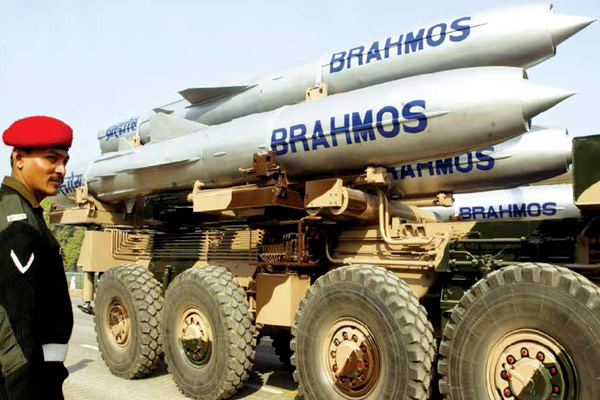
Against China, the IAF could easily move the Rafale squadrons to the Ladakh sector as part of a wider plan to strengthen India’s military posture in the region, where Indian and Chinese forces are locked in a tense border confrontation. According to its manufacturer Dassault, the aircraft has “cold engine start capability to operate from high-altitude bases”. With limited stealth capability will be handy against China’s J-20 stealth fighter which has experienced a range of problems including lack of a reliable power plant.
Conclusion
During the 1999 Kargil War, India’s fighter fleet had the MiG-21, MiG-23, MiG-27, MiG-29, Jaguar and the Mirage-2000. However, only the limited Mirage fleet was capable of being fitted with laser guided bombs that were required to destroy enemy posts. Still, the IAF enjoyed a huge qualitative edge over the PAF, whose fighter pilots refused to engage with India’s powerful MiG-29s equipped with beyond visual range (BVR) missiles with a greater range. This allowed the Fulcrums to provide air cover for all its aircraft to operate with impunity. PAF F-16s watched helplessly as the Mirages blasted the Pakistan Army posts round the clock, killing hundreds of Pakistani soldiers, allowing the Indian Army to quickly clear the Kargil peaks.
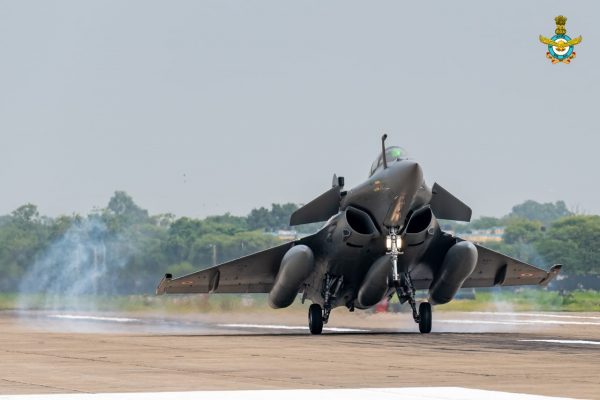
However, today with more advanced F-16s and Chinese J-10s with longer range BVR missiles, the PAF has narrowed the gap. The Rafale’s arrival could restore the IAF’s two-decade long lead. Having two dedicated aircraft for establishing air dominance offers India’s war planners’ strategic flexibility and increases the odds of success. But for that to truly happen, larger numbers of Rafale squadrons need to be inducted to ensure the IAF’s aerial dominance for at least the next 20 years.
– The writer is a globally cited defence analyst. His work has been published by leading think tanks, and quoted extensively in books on diplomacy, counter terrorism, warfare and economic development.Views expressed are personal and do not necessarily reflect the views of Raksha Anirveda








